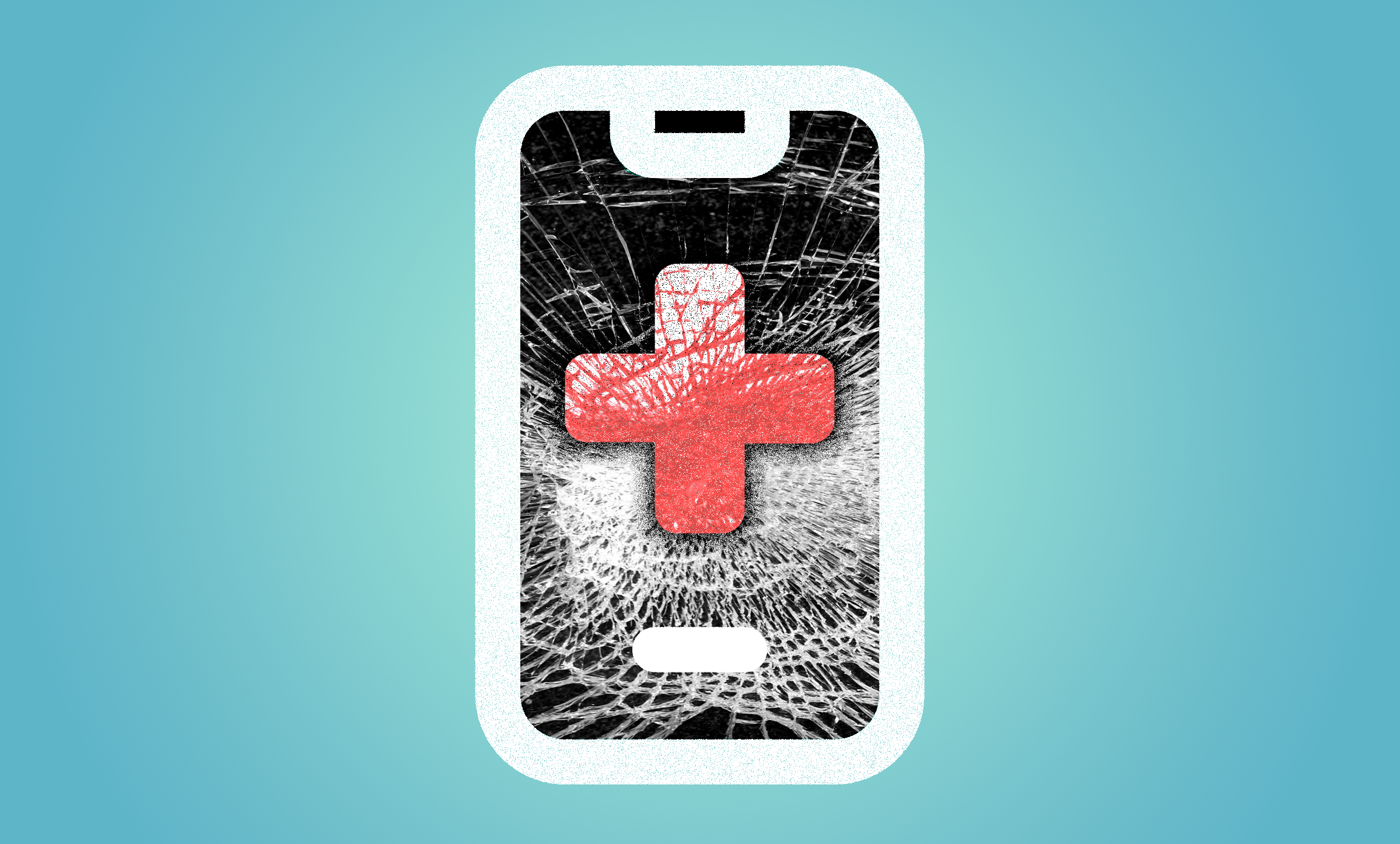The Future of Healthcare: How Hospital Sites Must Evolve
10 min read
Evolving Hospital Sites for Future Healthcare Needs
The healthcare industry is experiencing an explosion of digital tools. This innovation is driven by new technologies, fervent competition, and growing patient expectations. Additionally, the COVID-19 pandemic has led to an overwhelming demand for critical care and telehealth, greatly accelerating the need for new digital practices. Things are changing.
The hospital sites and healthcare apps of today will seem outdated and archaic to the users of tomorrow. Many are outdated and archaic right now. Hospital marketing and IT teams often don’t know where to start. The temptation, as always, is to jump on the next big thing. But the technology du jour doesn’t matter; it’s how you use technology to address real-world patient needs. Expectations will only grow, and hospitals must learn how to address these needs to remain competitive.
Create a stronger future for your organization by engaging patients on their terms, making their lives easier by supporting their everyday healthcare tasks. We’ve identified the top ways hospital sites must evolve over the next decade—no matter what happens with tech, and no matter what trends rule the day.
Offer an excellent experience at every touchpoint.
Patients used to connect with their care team in a few simple ways: phone calls, letters, and face-to-face. Now it’s all the above plus a variety of digital tools: website forms, apps, video calls, chat, text, and social media. While it’s still easy to pick up a phone, patients (and users in general) often struggle filling out lengthy forms and navigating bloated apps. Logging in to websites and apps can be especially brutal, and almost everything requires it.
Unfortunately, patients don’t differentiate between offline and online activities. It’s all part of the care experience to them. If a hospital app is difficult to work with, they won’t blame the app. They’ll blame the hospital. When it comes to getting things done, whether in person or in app, patients expect quick help addressing their problems.
Hospitals need a comprehensive, forward-facing strategy that supports the shift from face-to-face interactions to digital-first interactions. It must blend physical and virtual care and guide people through a confusing, opaque health system. It must factor in constantly growing user expectations. It must be centered on the patient’s perspective.
Crafting a Patient-Centered Digital Strategy
According to PandaHealth, only 48% of hospitals have a strategy of any kind in place, meaning they’re already behind. To get started, audit your current digital experiences (sites, apps, and related interactions) to see whether they’re supporting your business goals. Look at user behavior patterns, business metrics, content, mobile-friendliness, speed, usability, and accessibility.
Use what you learn to author a strategy that prioritizes user experience. Until this happens, patients will continue to struggle and be reluctant to engage with new technology. Designing digital experiences takes time and budget and expertise, which may be in short supply. It’s not easy, but the investment is worth every penny.
Make it easy to get care.
Hospital websites are often treated as a rudimentary arm of the marketing machinery. They’re seen as a way to push brochure-like information to patients (who still have to go into the office or make a phone call to actually do anything). Marketing teams forget what people really need: an easy, stress-free path to care.
Contrastingly, people are only ever a few taps away from picking up coffee down the street, calling a rideshare, or grabbing movie tickets. As healthcare goes increasingly digital, patients will expect the same instant, easy access to high-quality care. Every interaction, at every step, must feel effortless. If patients struggle to complete basic tasks or routinely feel frustrated, they’ll just go to a competitor, who may be local or in another market entirely thanks to virtual tools.
The good news is that most hospitals, spurred on by the pandemic, have taken steps toward greater support for self-service. According to The Office of the National Coordinator for Health Information Technology (ONC), more than 95% of hospitals now offer access to electronic health records (eHRs) via a patient portal. The bad news is that these portals are all so poorly designed that patients tend to hate using them.
Modern patients expect the same ease, convenience, and customization options when booking a doctor’s appointment as when booking a hotel. Most hospitals are a long way from achieving this. A recent MedCityNews survey revealed that over 80% of healthcare consumers cited appointment availability as “very or extremely important” when choosing a provider. Yet only one of the top 20 U.S. health systems displays real-time availability in provider search results.
Investing in Self-Service
Hospitals must make it easy to get care. Right now, that means investing resources in self-service opportunities that support common tasks, like scheduling appointments, researching providers, speaking with a doctor, and making payments. Start by finding ways to integrate existing tools or functionality.
Seamlessly integrate healthcare tools.
While patient portal apps need drastic improvement, our reliance on them will only increase. They’re still the best way for patients to access health records and have some ownership over their care. And they can more efficiently add helpful functionality, like scheduling or chat, that would be too resource-intensive to develop in-house.
Most portals make versions of common tools available. Hospitals can link to these tools or embed them directly on their site. But either option can make for a jarring experience. Linking to external sites or tools, even when customized and branded, can feel disjointed and difficult to access. Embeds are often not optimized for mobile and can display poorly or not work at all. For third-party tools to be truly useful, they must feel like a natural extension of your site. They cannot be afterthoughts or add-ons. They cannot be accepted as-is.
Pushing Tool Integration Boundaries
Hospitals must hold vendors to a high standard to ensure a seamless experience. What this means: always ask and push. Ask about upgrades or new capabilities. Ask about customization options. Ask about accessibility. Talk to technical contacts who can respond realistically and knowledgeably. And factor in lots of time for testing, on desktop and mobile.
Create an amazingly helpful search experience.
Make the online health experience far easier by incorporating well-designed, robust search. Hospital sites often treat the search as perfunctory or an afterthought, but when users have trouble navigating or finding what they need, this area becomes their lifeline. Search is particularly important for large, complex websites, like hospital systems that must house multiple departments, reference separate practice sites, and address a broad range of needs.
Improving Search
Give the search experience as much attention as you give to creating your site’s content and features. A clear search box must be easily found on your home page and easily accessible from all pages on your site. Be wary of out-of-the-box solutions. Because people rarely look beyond the second page of results, search results must be thoughtfully prioritized and easily scanned. Page titles and meta data must be accurate and helpful at a glance. Test search thoroughly on multiple devices (desktop, tablet, mobile), like you would any other screen or section. As always, test for accessibility compliance.
Help Google help you.
Beyond internal site search, hospitals must also consider how results appear on search engines. Search drives nearly three times as many visitors to hospital sites compared to non-search visitors. The average (highly efficient, task-oriented, easily frustrated) user has learned that they can type directly into Google to find what they need without ever having to bother with site navigation.
Improving SEO
Sites must be designed with SEO best practices in mind to help patients find the right content and organically direct them to the right place. This does not mean paragraphs of copy, keyword-stuffing, or elaborate page-ranking nonsense. It means authoring relevant content. It means creating an intuitive content hierarchy, optimizing page load, and making accessible sites. It means ensuring all-around excellent usability, which Google rewards richly.
Get serious about analytics and tracking user behavior.
Doctors can see how patients respond in-person, to gauge whether treatment is working or needs to be adjusted. Hospitals should also know exactly how patients use their digital tools, to gauge whether these tools are helpful for patients and effective for the bottom line. As costs rise, hospitals will be pressed further to justify digital investments with data. This means becoming methodical and near-fanatical about collecting analytics.
Hospitals need to know what patients are clicking and where they stop scrolling. They need to know what content is helping them and what’s being ignored. They need to know where to pour their energy and where to cut their losses. They need to know what’s working and where to tweak based on real behavior. The best hospitals are already doing this and doing the best job adapting their sites for growing patient needs.
Tracking User Behavior
To do this well, you need to define goal-based metrics and a strategy that says how often to measure. Once your strategy is in place, you can begin setting up analytics. We recommend using an event-based tracker for your sites and apps, like Google Analytics 4, and a behavior-based tracker, like CrazyEgg, to get a rich cross-section of user data.
Use simple, patient-centered language.
Back in 2017, the Center for Plain Language found that the average American reads at a 7th to 8th grade level, which is the benchmark for written guidelines in the medical industry. These levels haven’t improved and are unlikely to in the future. Web content targeting a general audience (including those who speak English as a second language) must keep these limitations in mind by using simple sentences and direct language.
Yet an exploratory study on the accessibility, usability, and security of hospital websites found that the average readability score was "difficult to read," with most websites leaning toward "very difficult to read." Clinicians and marketing, as subject matter experts, often dictate what goes on a hospital site or app. This can result in screens full of medical jargon and confusing, dense paragraphs that make these important sources of health education difficult to digest and less than helpful.
Writing for Real Patients
Hospitals must prioritize clarity and simplicity to serve the needs of the broader community. They must make the upfront effort to translate difficult concepts and complex ideas into clear actions and next steps. Hospitals must abandon internally oriented jargon. Clinicians and marketing teams can inform content direction, but ultimately, a UX writer who specializes in online simplicity will solve the comprehension problem of most hospital sites.
Conduct a content audit to make sure every word, image, document, or interaction on your site or app is working effectively. Then streamline content based on real-world user needs and behavior (that you are tracking carefully). Use an empathetic, direct tone. Shift from generic, marketing-driven filler copy to highly contextual, patient-centered, actionable content.
Plan for fast, mobile-friendly experiences.
As smartphone market acceptance surges and devices become more widely available at all price points, patients are increasingly relying on their phones to do work and complete tasks. Some patients may only use their phone. According to a Pew Research Center Report, 12% of adults living in low-income households were smartphone-only internet users, meaning they don’t have access to the internet from a home computer. By early 2021, this number jumped to 27% of adults who navigate solely via their mobile device. Over the next decade, the number of mobile-first and mobile-exclusive users will continue to rise dramatically.
Yet hospital sites, doctor’s office sites, and healthcare apps are still notoriously difficult to use and navigate on mobile phones. Text, created by young designers with excellent eyesight, is often far too small for anyone over 40. Interactive elements can be hard to tap if not given generous space. Layouts that work on the desktop are apt to break on phones. That text that seemed so short on the desktop overwhelms mobile screens. For all of these reasons, mobile interfaces can be especially tough for senior citizens and those with disabilities, primary users of the healthcare system.
Supporting Mobile
Hospital sites must support smartphone-only access. Follow mobile usability best practices to ensure better experiences across devices and age groups. Plan for the mobile experience from the beginning of the design process. Simplify navigation, radically cull text, and create large, easy-to-tap call-to-actions. Test everything first on mobile.
Establish a digital accessibility strategy now for long-term compliance.
Proper digital accessibility ensures websites, apps, and software are available to all users, including those who use screen readers or other assistive technology. Not only is accessibility the right thing to do, it is a legal mandate. The Americans with Disabilities Act (ADA) requires any organization covered under the act to communicate effectively about their programs, services, and activities—including via their website.
But most hospital sites fall egregiously short on compliance, with many unaware of the requirements at all. This puts hospitals at significant legal risk. And digital accessibility lawsuits are on the rise. An April 2022 report from Essential Accessibility states that healthcare companies are “increasingly among those targeted as the number of digital accessibility lawsuits trends upward.” As hospitals move to a post-pandemic, digitally-driven strategy, it’s more important than ever to ensure sites, apps, and software are accessible to all patients.
Gaining Compliance and Becoming Accessible
By demonstrating a commitment to inclusive experiences, hospitals will reduce their legal risk and improve patient satisfaction with a better experience that benefits everyone.
Aim for digital accessibility compliance based on the WCAG AA guidelines. If an existing product isn’t already designed and developed according to these standards, it will be incredibly difficult and costly (and sometimes impossible) to remediate. But building in accessibility from the ground up is far easier. For maximum efficiency, hospitals should make sure any new sites or apps are accessible from the start. Consider it non-negotiable.
Next, focus on long-term planning by creating an accessibility roadmap to consciously work toward bringing your existing sites and apps into compliance (and keeping them there). Include ample time for internal WCAG training. You’ll need it.
Embrace the new normal.
The healthcare industry will continue to change significantly in the next decade. A successful strategy for these coming years rests on creating excellent experiences across all touchpoints, particularly digital touchpoints.
When thinking about how to evolve your site or app, always adopt the patient (consumer, user) perspective. Center digital product planning on what people are already doing online and how you can help them do those things much, much easier. You’ll achieve a competitive edge now and well into the future.





